Jaipur: Architecture, Art and Culture, Festivals in Jaipur
The vibrant state of Rajasthan in India, is renowned for its rich history, cultural heritage, and, perhaps most strikingly, its unique and captivating architecture. Often referred to as the "Pink City" due to the dominant color of its historical buildings, Jaipur

Jaipur, the capital city of the vibrant state of Rajasthan in India, is renowned for its rich history, cultural heritage, and, perhaps most strikingly, its unique and captivating architecture. Often referred to as the "Pink City" due to the dominant color of its historical buildings, Jaipur boasts a stunning array of structures that reflect the grandeur of its past rulers and the artistic finesse of its craftsmen.
Exploring the architectural wonders of Jaipur Architecture Of Jaipur is not just a journey through time but an immersion into the very soul of this enchanting city, where history and artistry stand hand in hand, inviting all to witness the beauty of the Pink City.
Jaipur Architecture
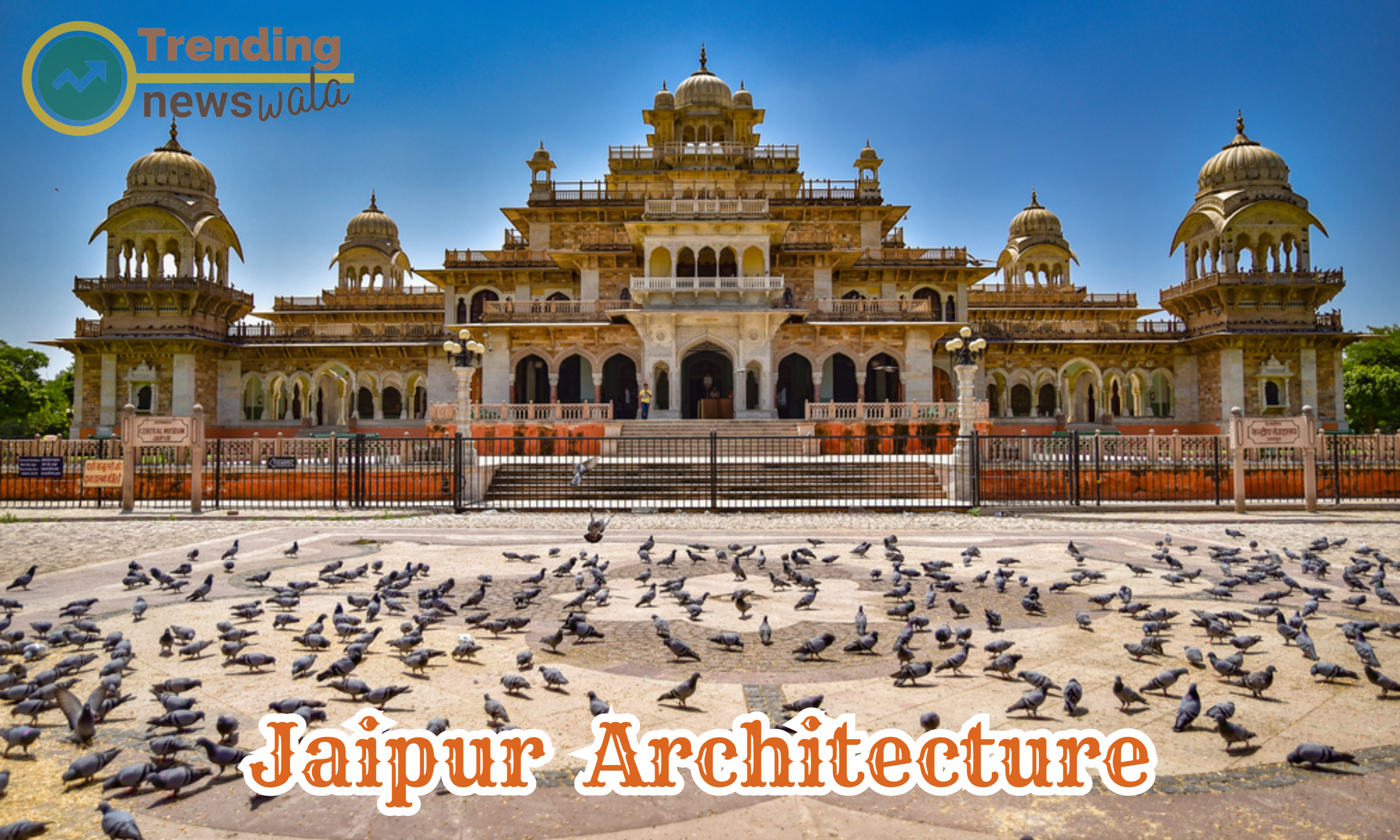
Certainly! Jaipur, the capital city of the Indian state of Rajasthan, is renowned for its distinct and vibrant architecture. The city was founded in 1727 by Maharaja Sawai Jai Singh II, and its architecture reflects a harmonious blend of Rajput, Mughal, and European styles. Here are more details about the unique features and architectural wonders of Jaipur:
Distinctive Color Scheme: Jaipur earned the nickname "Pink City" due to the terracotta-pink color used to paint the buildings in 1876 to welcome the Prince of Wales. The color scheme was later retained, giving Jaipur its iconic appearance.
City Palace: The City Palace, a magnificent complex in the heart of Jaipur, combines Rajput, Mughal, and European architectural elements. It houses Chandra Mahal and Mubarak Mahal, showcasing exquisite courtyards, gardens, and intricate decorations.
Hawa Mahal: The Hawa Mahal, or "Palace of Winds," is a five-story architectural marvel with a honeycomb-like facade. Its purpose was to allow royal ladies to observe street activities while maintaining their privacy.
Amer Fort: Perched on a hill, Amer Fort is a stunning example of Rajput military architecture. The fort's Sheesh Mahal, or Mirror Palace, is renowned for its intricate mirror work, while the Ganesh Pol entrance is an ornate masterpiece.
Nahargarh Fort: Offering panoramic views of the city, Nahargarh Fort is known for its robust defense mechanisms and charming Madhavendra Bhawan, a series of interconnected suites for the king and his queens.
Astronomical Marvel: Jantar Mantar, an 18th-century astronomical observatory, features a collection of architectural instruments designed for precise astronomical measurements. The Samrat Yantra sundial is one of the largest in the world.
Indo-Saracenic Influence: The Albert Hall Museum, constructed in the Indo-Saracenic style, is a visual treat with its domes, arches, and intricate lattice work. It houses an extensive collection of artifacts, including textiles, sculptures, and paintings.
Panna Meena ka Kund: While not as famous as some other structures, Panna Meena ka Kund is a beautifully symmetrical stepwell known for its unique crisscrossing stairs and stunning architectural design.
Havelis: Jaipur features several ornate havelis, showcasing traditional Rajasthani architecture with intricately carved facades and courtyards.
Markets (Bazaars): The markets of Jaipur, like Johari Bazaar and Bapu Bazaar, not only offer a vibrant shopping experience but also display architecture with distinctive arches and facades.
Jaipur Historical Buildings
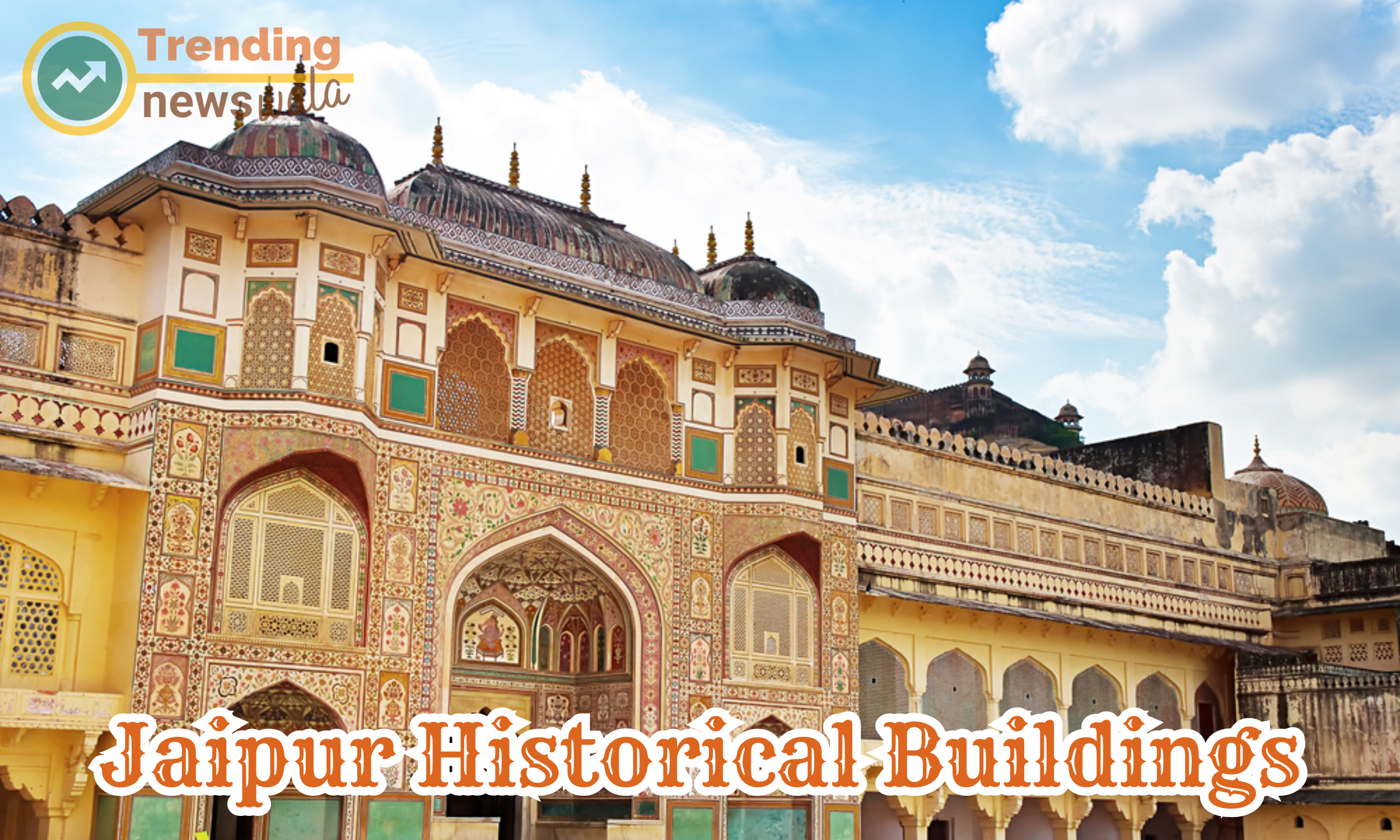
Certainly! Jaipur, known for its rich cultural heritage, boasts a collection of historical buildings that reflect the city's royal past and architectural splendor. Here are more details about some of the prominent historical buildings in Jaipur:
Architecture: The City Palace is a magnificent complex that blends Mughal and Rajput architectural styles. It features impressive gates, stunning courtyards, and intricate detailing on its structures.
Highlights:
- Chandra Mahal: The seven-storied palace within the complex.
- Mubarak Mahal: A beautiful hall displaying royal costumes and textiles.
Architecture: The Hawa Mahal, or "Palace of Winds," is an iconic structure known for its unique honeycomb facade with 953 small windows (jharokhas). The architecture allows for cross-ventilation, keeping the palace cool.
Purpose: Built for the royal ladies to observe street processions while maintaining their privacy.
Architecture: Amer Fort showcases a blend of Hindu and Rajput architectural styles. The fort is constructed with red sandstone and marble, featuring intricate carvings, mirror work, and paintings.
Sheesh Mahal: The Mirror Palace inside the fort is famous for its walls adorned with tiny mirrors that create a stunning reflective effect.
Architecture: Perched on the Aravalli hills, Nahargarh Fort displays strong defensive architecture. The Madhavendra Bhawan, a set of connected suites for the king and his queens, exhibits a blend of Indian and European architectural elements.
Panoramic Views: Offers breathtaking views of Destination Wedding in Jaipur , making it a popular spot for locals and tourists.
Architecture: Jantar Mantar is an astronomical observatory built by Maharaja Sawai Jai Singh II. The site features a collection of large-scale instruments, each serving a specific astronomical purpose.
Key Instruments:
- Samrat Yantra: A massive sundial.
- Jai Prakash: Consists of concave hemispheres used for measuring positions of celestial bodies.
Architecture: The Albert Hall Museum, built-in 1876, showcases Indo-Saracenic architecture. The museum's design incorporates elements from various architectural styles, including Mughal, Rajput, and Islamic.
Collections: Houses an extensive collection of artifacts, including sculptures, paintings, and decorative arts.
Architecture: Although not as well-known, Panna Meena ka Kund is a stepwell with symmetrical staircases and striking architectural details.
Purpose: Historically used as a community gathering place and water source.
Architecture: J aipur features numerous havelis, showcasing traditional Rajasthani architecture with ornate facades, courtyards, and frescoes.
Examples:
- Patwon ki Haveli
- Nathmal ki Haveli
Architecture: Step wells, such as Chand Baori near Jaipur, are examples of ancient water storage structures with intricate geometric designs.
Purpose: Provided a reliable source of water for the community.
Pink City Landmarks
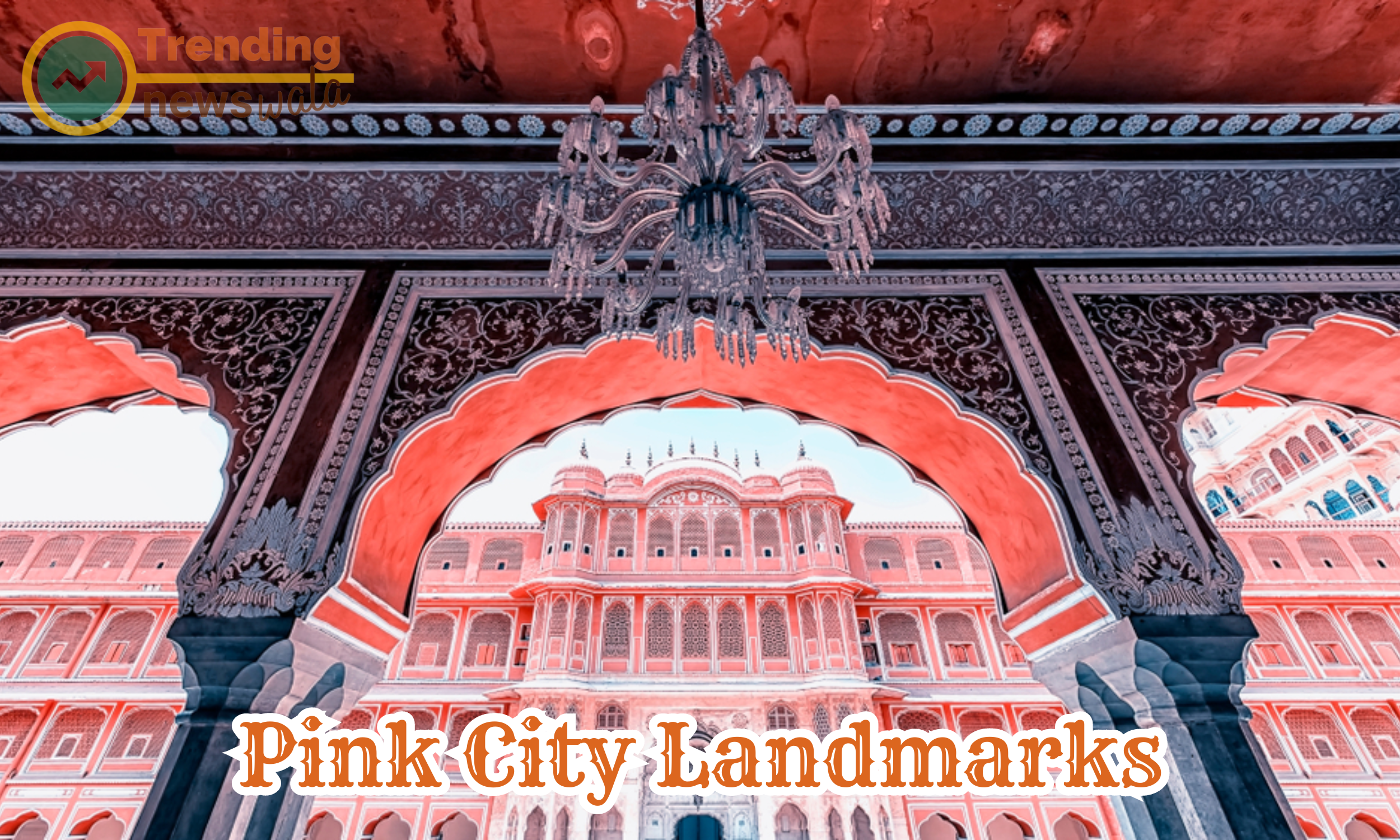
Certainly! "Pink City" is a nickname for Jaipur, the capital city of the Indian state of Rajasthan. The city earned this moniker due to the distinctive pink color of many of its buildings. Here are some prominent landmarks in Jaipur, often referred to as the Pink City:
Hawa Mahal (Palace of Winds):
- A stunning five-story palace with a unique honeycomb design.
- Built in 1799 by Maharaja Sawai Pratap Singh for royal women to observe street festivals while unseen from the public.
City Palace:
- A magnificent palace complex that houses the Chandra Mahal and Mubarak Mahal among other structures.
- The palace showcases a beautiful blend of Mughal and Rajput architecture.
Jantar Mantar:
- An astronomical observatory built by Maharaja Jai Singh II in the early 18th century.
- Features the world's largest stone sundial and various other instruments for celestial observations.
Amber Fort (Amer Fort):
- Located on a hill, Amber Fort is an imposing fortress that offers stunning views of the surrounding landscape.
- Known for its intricate architecture, courtyards, and the Sheesh Mahal (Mirror Palace).
Jaigarh Fort:
- Perched on the Cheel ka Teela (Hill of Eagles), it provides a commanding view of the surrounding plains.
- Houses the world's largest cannon on wheels, known as Jaivana.
Nahargarh Fort:
- Another fortress on the Aravalli hills, offering panoramic views of the Pink City.
- Built in the 18th century to provide defense to the city.
Albert Hall Museum:
- Located in the Ram Niwas Vertical Garden, it is the oldest museum in Rajasthan.
- Houses a vast collection of artifacts, including paintings, sculptures, and decorative arts.
Jal Mahal:
- A palace situated in the middle of the Man Sagar Lake.
- The palace appears to float on the water and is a popular spot for photography.
Galtaji (Monkey Temple):
- A complex of temples and kunds (natural springs) surrounded by hills.
- Known for its natural beauty, the temple is inhabited by a large population of monkeys.
These landmarks collectively contribute to Jaipur's rich cultural and historical significance, making it a popular tourist destination. The pink-hued architecture, vibrant markets, and traditional Rajasthani culture further enhance the city's charm.
Hawa Mahal Design
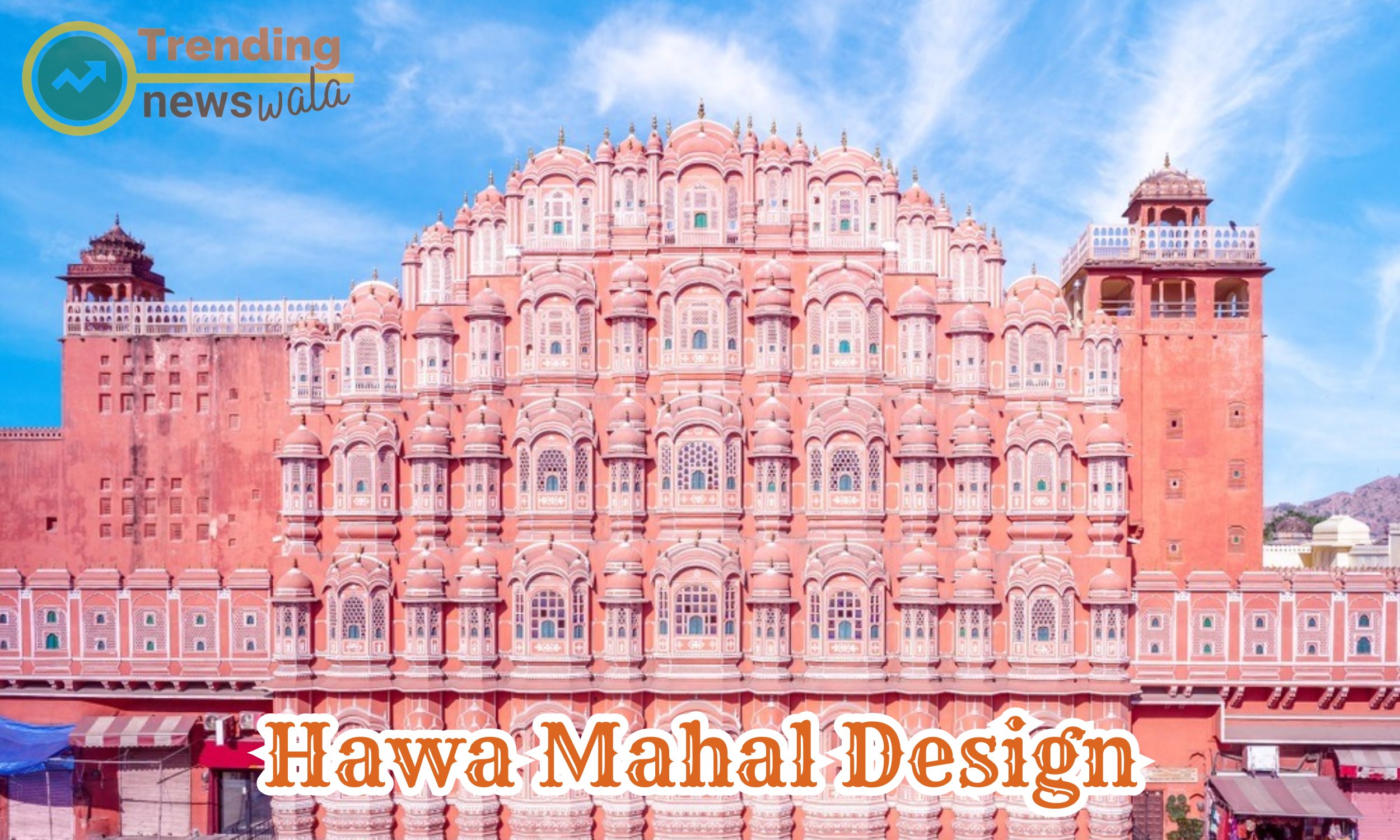
Certainly! Hawa Mahal, also known as the Palace of Winds, is an iconic structure in Jaipur known for its unique and intricate design. Here are more details about the design of Hawa Mahal:
Architectural Style:
- Hawa Mahal was built in the form of a high screen wall so that the women of the royal household could observe street festivals and daily life without being seen from the outside.
- The architectural style is a fine example of the Rajputana architecture, heavily influenced by Mughal aesthetics.
Pink Sandstone Facade:
- The entire structure is constructed using pink and red sandstone, which gives Jaipur its characteristic pink hue. The use of pink sandstone is a notable feature of many buildings in Jaipur, and it's one of the reasons the city is called the Pink City.
- The facade of Hawa Mahal is intricately carved with floral patterns and small windows, giving it a delicate and ornate appearance.
Honeycomb Design:
- One of the most distinctive features of Hawa Mahal is its honeycomb-like structure.
- The palace has 953 small windows called "jharokhas," which are decorated with latticework. These jharokhas not only serve an aesthetic purpose but also allow cool air to circulate through the palace, providing a natural air conditioning effect.
Five Stories:
- Hawa Mahal is a five-story structure with the front elevation resembling the crown of Lord Krishna.
- Each floor has a different style of architecture, and the top floors offer breathtaking views of the City Palace, Jantar Mantar, and the bustling streets of Jaipur.
Pyramidal Shape: The structure has a pyramidal shape, with the base being wider than the top. This design adds to the stability and grandeur of the palace.
Inner Courtyard: Behind the facade, there is an inner courtyard with two double-storied buildings on either side. These buildings were originally meant for the royal retinue.
Purposeful Design: The design of Hawa Mahal was not only aesthetically pleasing but also served a functional purpose. The lattice windows allowed royal women to observe the activities on the street without being visible to the public.
Cultural Significance: Hawa Mahal is a symbol of Jaipur and Rajasthan's rich cultural heritage. It stands as a testimony to the architectural brilliance of the Rajput era.
Visiting Hawa Mahal is like stepping back in time and experiencing the grandeur of Rajasthan's royal history through its exquisite architecture and thoughtful design.
City Palace Jaipur layout
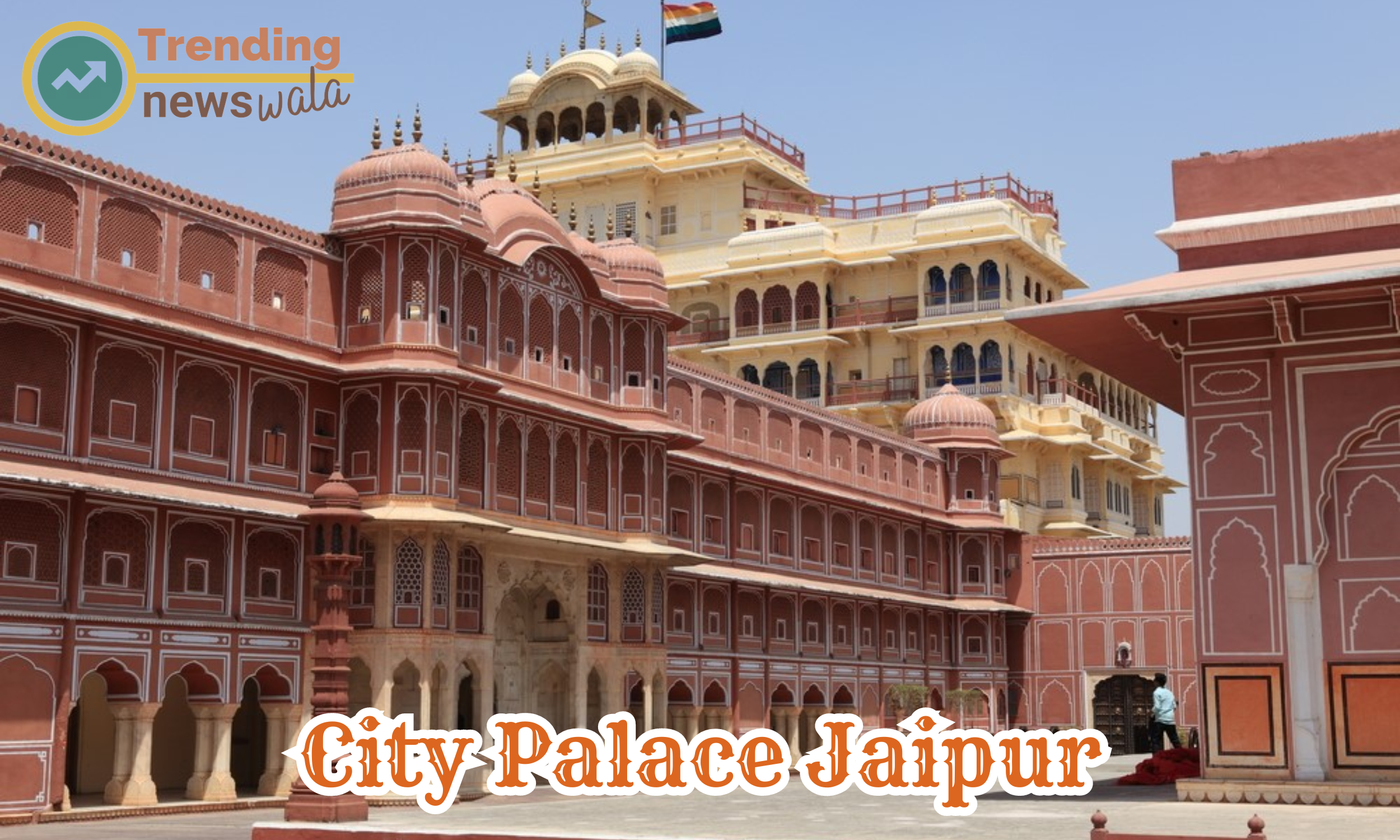
Certainly! The City Palace in Jaipur is a magnificent complex that reflects a blend of Mughal and Rajput architecture. It has a vast layout with various courtyards, palaces, and structures. Here are more details about the layout of the City Palace Jaipur:
Chandra Mahal:
- The Chandra Mahal is the main palace building within the complex and serves as the residence of the descendants of the royal family.
- It is a seven-storied structure, each floor known as a "Mahal" or palace, and has a unique name. The top floor is called Mukut Mahal.
Mubarak Mahal:
- Located in the first courtyard, Mubarak Mahal was built by Maharaja Madho Singh II and now houses the Textile Museum.
- The museum displays a rich collection of royal costumes, textiles, and other artifacts.
Diwan-i-Khas:
- This is the Hall of Private Audience, where the Maharaja would meet with important guests.
- The hall is adorned with intricate decorations, including beautiful floral patterns and mirror work.
Diwan-i-Aam:
- The Hall of Public Audience, where the Maharaja addressed the general public and listened to their grievances.
- The hall has a beautifully decorated ceiling and archways.
Maha Singh Ki Chhatri:
- This is a memorial to Maharaja Sawai Man Singh II and is located near the entrance of the City Palace.
- The memorial is an elegant structure with a dome and intricate carvings.
Pritam Niwas Chowk:
- This is a courtyard that houses four beautifully decorated gates representing the four seasons.
- The gates are dedicated to different Hindu gods and goddesses.
Govind Dev Ji Temple:
- Situated within the City Palace complex, this temple is dedicated to Lord Krishna.
- The temple is a significant spiritual site and is known for its religious and cultural importance.
Jantar Mantar (part of the complex):
- While the Jantar Mantar is a separate attraction, it is often considered part of the overall City Palace complex.
- This astronomical observatory was built by Maharaja Jai Singh II and features a collection of architectural astronomical instruments.
Pitam Niwas Chowk:
- Another courtyard within the complex that is known for its intricate architecture and detailing.
- The courtyard has a unique peacock gate and is dedicated to Lord Vishnu.
Sarvato Bhadra: A small hall that served as a venue for important religious ceremonies and events.
Jantar Mantar Structure
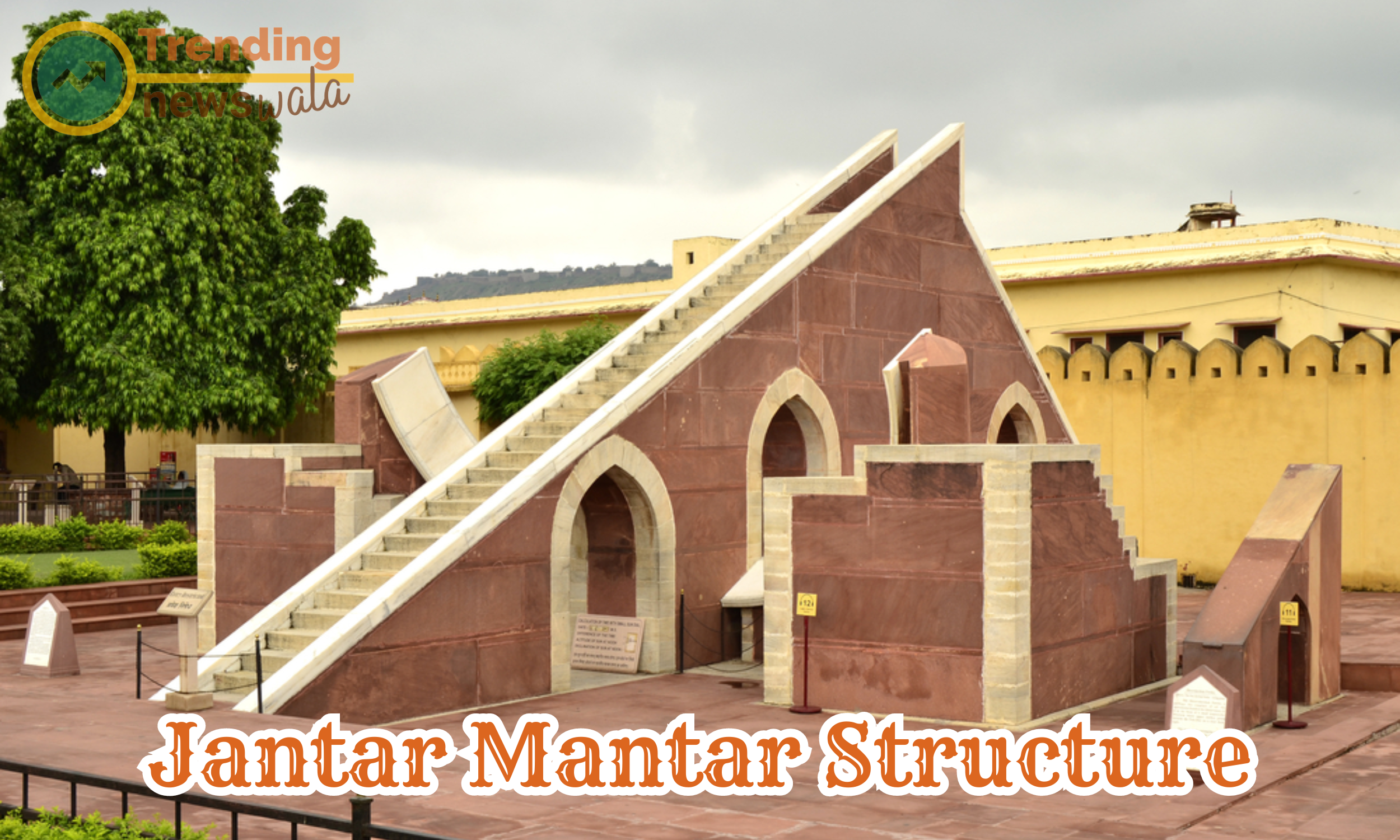
Certainly! The Jantar Mantar in Jaipur is a fascinating astronomical observatory and a UNESCO World Heritage Site. Bishnoi Village in Jodhpur It was built by Maharaja Jai Singh II in the early 18th century to observe and measure celestial phenomena. The term "Jantar Mantar" translates to "calculation instrument," and the site houses a collection of architectural and astronomical instruments. Here are more details about the structures within the Jantar Mantar:
Samrat Yantra (Supreme Instrument):
- The Samrat Yantra is the largest sundial in the world and is also known as the Giant Sundial.
- It stands at a height of 27 meters and can be used to measure time with an accuracy of about two seconds.
- The shadow cast by the central triangular wedge indicates the time of day.
Jai Prakash Yantra (Instrument for Conquering):
- This instrument consists of two hemispherical bowls with a gap between them.
- It was used to measure the position of celestial bodies, including the sun, moon, and stars.
Ram Yantra (Instrument for Height):
- The Ram Yantra consists of two large cylindrical structures with an associated staircase.
- It was used to measure the altitude and azimuth of celestial objects.
Dhruva Darshak Pattika (North Pole Star Viewer):
- This instrument is designed to observe the North Star (Dhruva Tara) and measure its position in the sky.
- It helps in determining the local time.
Rama Yantra (Instrument for Height):
- Similar to the Ram Yantra, the Rama Yantra is used for measuring the altitude and azimuth of celestial bodies.
- It consists of two cylindrical structures and an associated staircase.
Chakra Yantra (Instrument for Calculations):
- The Chakra Yantra is a set of circular, graduated discs used for various astronomical calculations.
- It was employed to determine the eccentricity of the sun's orbit.
Narivalaya Yantra (Instrument for Measuring Altitude of Stars):
- This instrument is composed of two hemispherical bowls used to measure the altitude of stars.
Digamsha Yantra (Instrument for Direction):
- The Digamsha Yantra is a simple instrument used for measuring the azimuth of celestial bodies.
- It consists of a pillar and crossbar.
Kapala Yantra (Bowl Instrument): This instrument resembles a hemispherical bowl and was used to determine the celestial coordinates of stars.
Krantivritta Yantra (Instrument for Measuring Celestial Longitude and Latitude): This instrument was used to measure the celestial longitude and latitude of stars.
Amer Fort Architecture
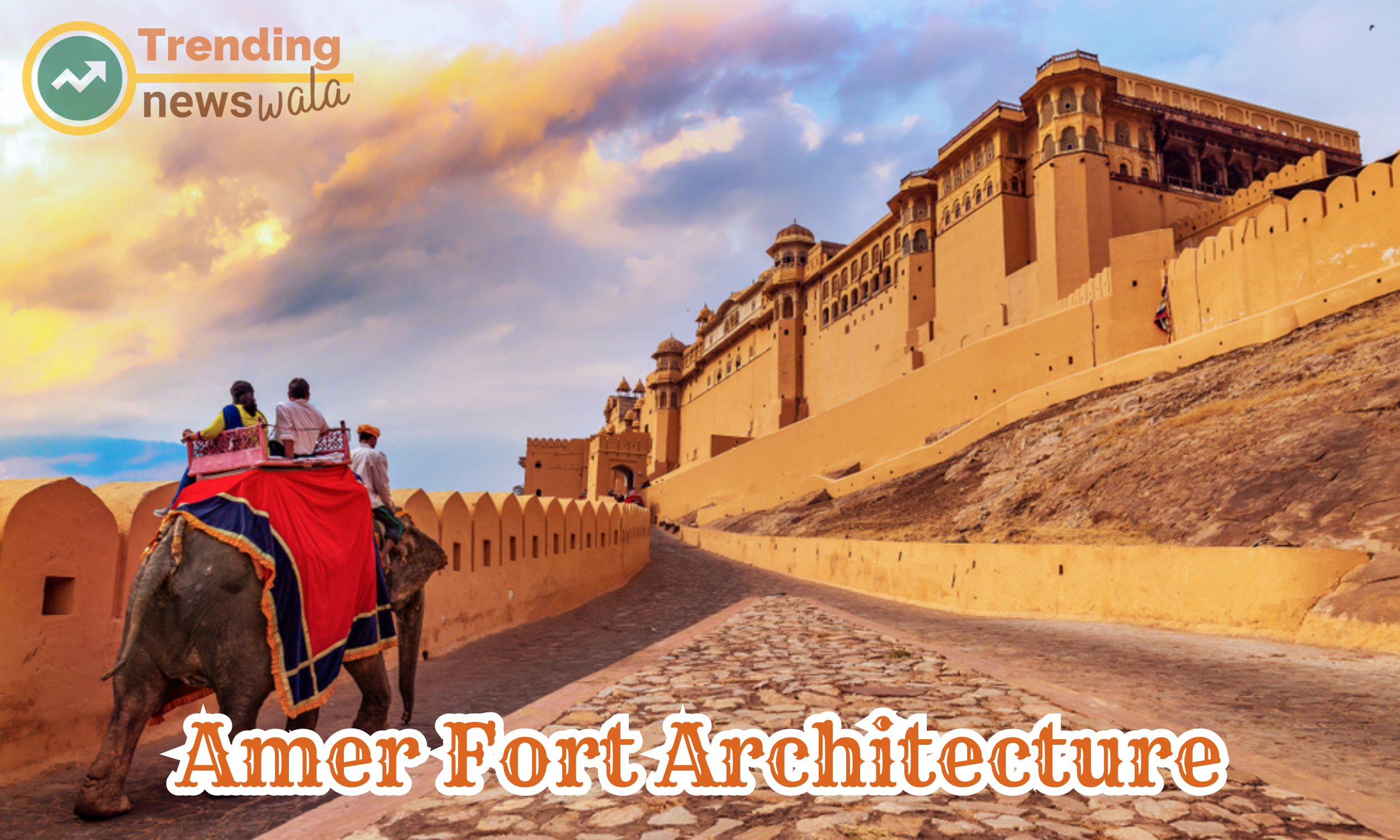
Certainly! Amer Fort, also known as Amber Fort, is a majestic fortress located on a hill in Amer, near Jaipur. It is renowned for its impressive architecture, a blend of Rajput and Mughal styles, and its strategic location that provides breathtaking views of the surrounding landscape. Here are more details about the architecture of Amer Fort:
Main Entrance:
- The fort's main entrance is known as the Suraj Pol (Sun Gate). It is a grand gateway that leads to the main courtyard of the fort.
- Suraj Pol is adorned with frescoes and paintings, showcasing intricate detailing and vibrant colors.
Ganesh Pol:
- The Ganesh Pol is another prominent gate within the fort complex.
- It is named after the Hindu deity Lord Ganesh and is beautifully decorated with frescoes and carvings.
Diwan-e-Aam (Hall of Public Audience):
- This hall was used for public gatherings and meetings. It has a raised platform where the king would address the public.
- The architecture includes a double row of columns and a beautifully painted ceiling.
Diwan-e-Khas (Hall of Private Audience):
- The Diwan-e-Khas was the private audience hall where the king would meet with important dignitaries.
- The hall is known for its intricate mirror work and floral patterns on the walls.
Sheesh Mahal (Mirror Palace):
- Sheesh Mahal is one of the most stunning parts of Amer Fort. The walls and ceilings are covered with tiny mirrors, creating a glittering effect.
- The mirrors were strategically placed to reflect candlelight and starlight, making it a breathtaking experience.
Sukh Niwas:
- Sukh Niwas, or the Hall of Pleasure, is a chamber designed to provide relief during hot summers.
- The architecture includes a water channel that runs through the hall, cooling the air as it circulates.
Jaleb Chowk:
- Jaleb Chowk is the main courtyard where military parades and gatherings used to take place.
- It is surrounded by several structures, including the Diwan-e-Aam and the Ganesh Pol.
Kesar Kyari Bagh:
- Located in the Maotha Lake, the Kesar Kyari Bagh is a beautiful garden that was used by the royal family for leisure.
- It is a rectangular-shaped garden with a causeway leading to the fort.
Shila Devi Temple:
- Within the fort, there is a temple dedicated to Shila Devi, a goddess revered by the royal family.
- The temple has silver doors, and an image of the goddess is worshipped during festivals.
Zenana (Women's Quarters):
- The Zenana is a complex of rooms and chambers for the royal women, including the queens and their attendants.
- The architecture includes ornate balconies, frescoes, and a network of passages.
Jaipur Heritage Sites
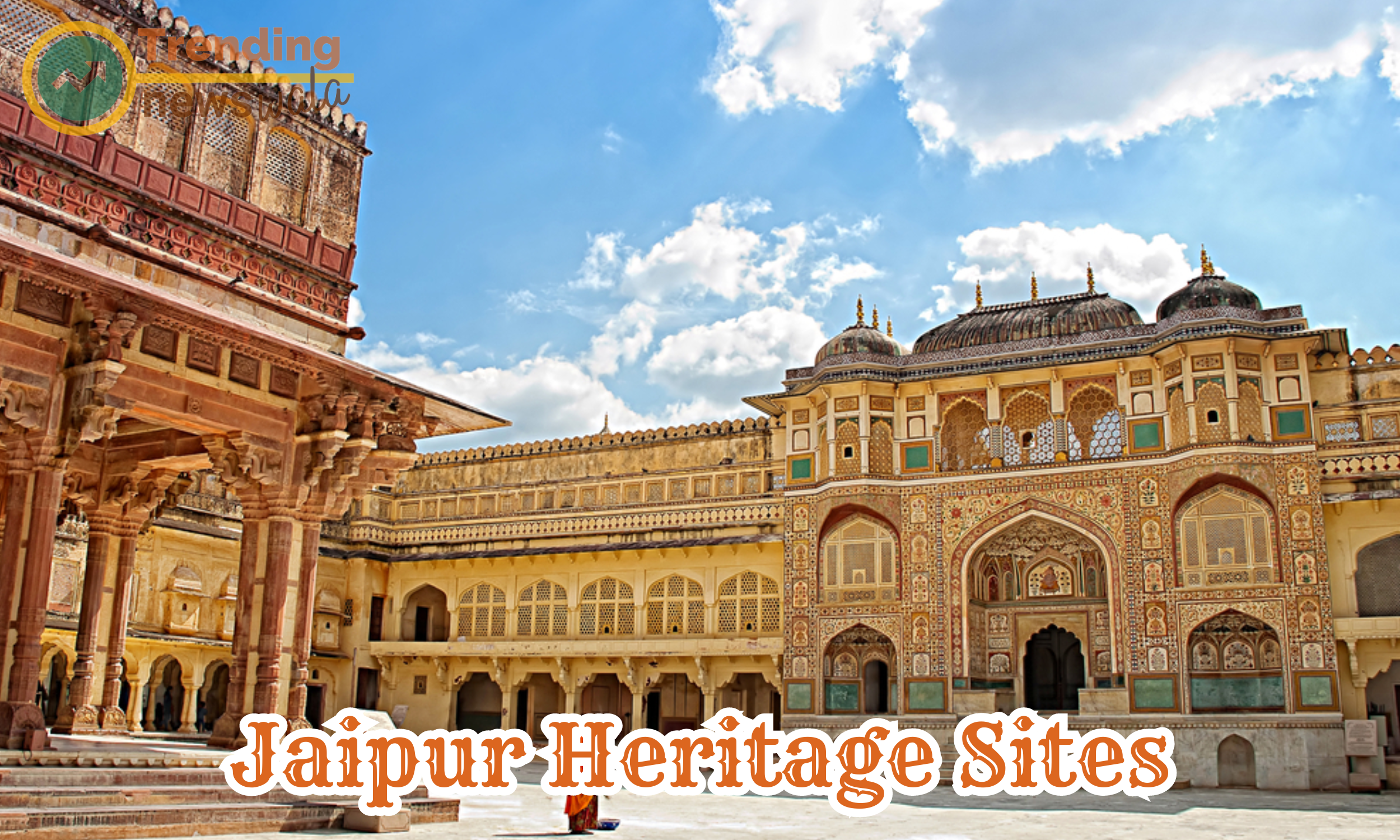
Certainly! Jaipur is a city rich in history and culture, and it boasts numerous heritage sites that showcase the grandeur of Rajasthan's past. In addition to the forts and palaces mentioned earlier, here are more details about some other significant heritage sites in Jaipur:
Jawahar Kala Kendra:
- Designed by the renowned architect Charles Correa, Jawahar Kala Kendra is a cultural center dedicated to the arts.
- The complex includes exhibition spaces, a theater, and art galleries, promoting traditional and contemporary arts and crafts.
Gaitore Ki Chhatriyan:
- Gaitore Ki Chhatriyan is the royal cremation ground for the Maharajas of Jaipur.
- The site features intricately carved cenotaphs (chhatris) dedicated to various rulers of the city.
Galta Ji (Monkey Temple):
- Located in the Aravalli Hills, Galta Ji is a complex of temples and kunds (natural springs).
- The temples are adorned with beautiful carvings, and the site is home to a large population of monkeys.
Govind Dev Ji Temple:
- Dedicated to Lord Krishna, the Govind Dev Ji Temple is situated in the City Palace complex.
- The temple is known for its religious significance and exquisite architecture.
Sisodia Rani Ka Bagh:
- Built by Maharaja Sawai Jai Singh II for his second queen, Sisodia Rani Ka Bagh is a beautiful garden.
- The garden features tiered multilevel terraces, fountains, and pavilions with frescoes depicting scenes from the life of Lord Krishna.
Statue Circle:
- Statue Circle is a popular landmark in Jaipur, featuring a statue of Maharaja Sawai Jai Singh II on horseback.
- The circle is surrounded by lush greenery and is a popular spot for locals and tourists alike.
Albert Hall Museum:
- While mentioned earlier, the Albert Hall Museum is worth highlighting as a significant heritage site.
- The museum is housed in a stunning Indo-Saracenic building and showcases a diverse collection of artifacts and exhibits.
Sargasuli Tower:
- Also known as the Isar Lat or the Victory Tower, Sargasuli Tower is located in the old city.
- It was built by Maharaja Sawai Ishwari Singh to commemorate his victory over Madho Singh II.
Raj Mandir Cinema:
- While not a traditional heritage site, Raj Mandir Cinema is an iconic movie theater known for its unique architecture.
- The cinema is often referred to as the "Pride of Asia" and has hosted numerous Bollywood movie premieres.
Chand Baori:
- While not located directly in Jaipur, Chand Baori is a stepwell in Abhaneri, near Jaipur.
- The stepwell is an architectural marvel with a series of steps leading down to a water reservoir.
These heritage sites collectively contribute to the cultural tapestry of Jaipur, offering visitors a glimpse into the city's royal history, Modular Sofas architectural brilliance, and artistic traditions. Each site has its unique charm and significance, making Jaipur a treasure trove of heritage.
Nahargarh Fort Design
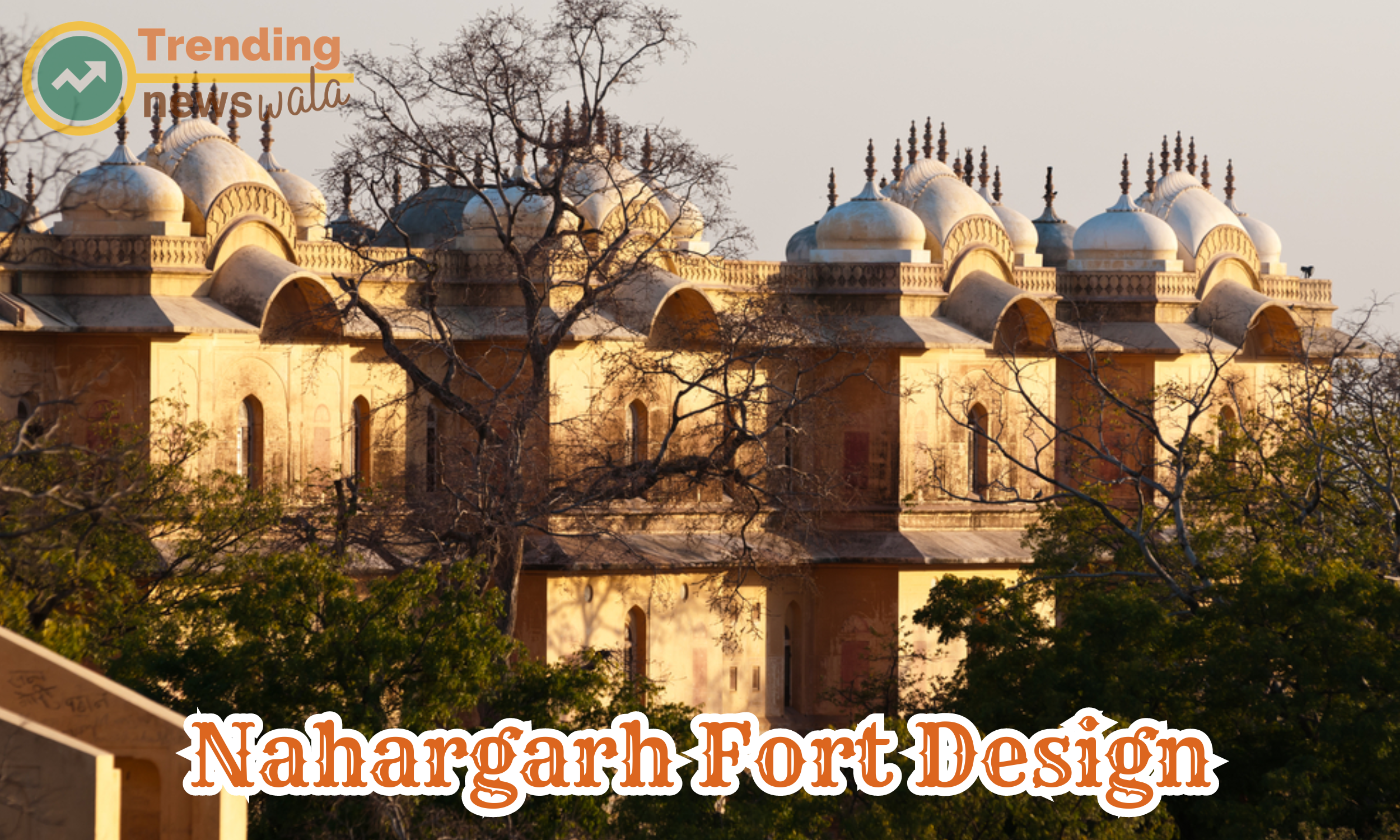
Certainly! Nahargarh Fort is a historic fortress located on the Aravalli hills overlooking the Pink City of Graphic Designer in Jaipur Built in the 18th century by Maharaja Sawai Jai Singh II, Nahargarh Fort is known for its strong defense structures, architectural beauty, and panoramic views of the surrounding landscape. Here are more details about the design of Nahargarh Fort:
Location and Layout:
- Situated on the edge of the Aravalli hills, Nahargarh Fort is strategically positioned to provide a defensive advantage.
- The fort has a sprawling layout, featuring a series of interconnected structures, courtyards, and walls.
Defensive Walls and Bastions:
- Nahargarh Fort is surrounded by thick walls and bastions, which were crucial for its defense against external threats.
- The bastions are strategically placed along the perimeter, providing vantage points for archers and defenders.
Entrance Gates:
- The main entrance of Nahargarh Fort is known as the Tadigate, which is a grand gateway leading to the fort.
- The entrance gate is designed with traditional Rajput architecture, featuring ornate arches and decorative elements.
Madhavendra Bhawan:
- Madhavendra Bhawan is a prominent part of Nahargarh Fort and is a complex of palaces for the king and his queens.
- The design of Madhavendra Bhawan reflects a mix of European and Indian architectural styles.
Stepwells and Water Reservoirs:
- The fort has several stepwells and water reservoirs to ensure a water supply during times of siege.
- These structures showcase the foresight of the architects in addressing the needs of the fort's inhabitants.
Courtyards and Gardens:
- Nahargarh Fort features several courtyards and gardens within its complex.
- These open spaces provide a serene environment and were likely used for recreational purposes.
Nahargarh Biological Park:
- Adjacent to the fort, there is the Nahargarh Biological Park, which is a part of the fort's overall landscape.
- The park Car Inspection is designed to preserve the natural flora and fauna of the region.
Artistic Elements:
- The fort is adorned with various artistic elements, including frescoes, carvings, and decorative motifs.
- These artistic details showcase the cultural richness and aesthetic sensibilities of the Rajput era.
Viewpoints:
- Nahargarh Fort offers spectacular panoramic views of Jaipur and the surrounding landscape.
- The fort's design includes strategic viewpoints that allow visitors to appreciate the beauty of the region.
Connecting Pathways:
- The pathways within Nahargarh Fort are designed to connect various sections of the complex.
- Visitors can explore the fort through a network of paths that lead to different structures and viewpoints.

What is the significance of Jaipur's architecture?
Jaipur's architecture is significant for its blend of Rajput and Mughal styles, vibrant colors, and intricate detailing. It reflects the rich cultural and historical heritage of Rajasthan.
Why is Jaipur called the Pink City?
Jaipur earned the nickname "Pink City" due to the widespread use of pink sandstone in its buildings. The color was chosen to mimic the red sandstone architecture of Mughal cities, symbolizing hospitality.
Which forts are must-visit for understanding Jaipur's architecture?
Amber Fort, Jaigarh Fort, and Nahargarh Fort are must-visit forts in Jaipur. Each showcases unique architectural elements, including intricate palaces, fortifications, and panoramic views.
What is the significance of the City Palace in Jaipur?
The City Palace is a symbol of Jaipur's royal history. It's a grand complex with a mix of Mughal and Rajput architecture, housing museums, courtyards, and the Chandra Mahal, the residence of the current Maharaja.
Can you explain the design of Hawa Mahal in Jaipur?
Hawa Mahal has a distinctive honeycomb design with 953 small windows (jharokhas) for ventilation. The pink sandstone facade features intricate latticework, allowing royal women to observe street activities discreetly.
What is the role of Jantar Mantar in Jaipur's architecture?
Jantar Mantar is an astronomical observatory built by Maharaja Jai Singh II. It features architectural instruments for celestial observations, showcasing the scientific and mathematical achievements of the time.
How does Amer Fort exemplify Rajput architecture?
Amer Fort showcases Rajput architecture through its grand entrances (Suraj Pol and Ganesh Pol), Diwan-e-Aam, Diwan-e-Khas, and the breathtaking Sheesh Mahal with intricate mirror work.
What makes Nahargarh Fort unique in terms of design?
Nahargarh Fort has strong defense structures with thick walls and bastions. The design includes Madhavendra Bhawan, a complex of palaces with a mix of European and Indian architectural styles.
Are there modern architectural landmarks in Jaipur?
Yes, modern landmarks include Jawahar Kala Kendra, a cultural center designed by Charles Correa, and the Raj Mandir Cinema, known for its unique architecture.
How does the architecture of Jaipur contribute to its cultural identity?
Jaipur's architecture reflects the cultural identity of Rajasthan, emphasizing a royal heritage, vibrant aesthetics, and a harmonious blend of tradition and innovation.





